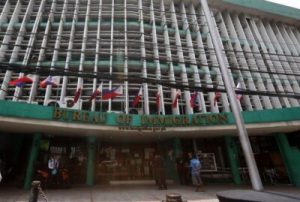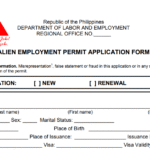Foreigners often come to the Philippines on a tourist visa or visa-free entry, only to realize they need a longer stay or a different visa type. The good news is that Philippine immigration rules allow certain visa applications and conversions to be processed while you are already in the country. Below is a clear breakdown of how in-country visa applications work, the situations where they are allowed, and what to expect from the process.
We will also briefly explain the pre-approved visa application process, which has been extended to 9(g) work visas since 2021, for those who wish to apply from their home country.
1. Understanding In-Country Visa Applications in the Philippines
An in-country visa application refers to applying for a new visa or converting your existing visa without leaving the Philippines. Instead of applying through a Philippine embassy or consulate abroad, you submit your application directly to the Bureau of Immigration or, in some cases, through authorized processing centers.
So yes, you can apply for or convert to a new visa once you are in the country. This process is particularly useful for those already in the Philippines for work, study, marriage, or retirement purposes but entered on a visa type that doesn’t match their intended length or purpose of stay.
2. When You Can Apply for a Visa Without Leaving the Philippines
In general, in-country applications are possible if:
- You entered the Philippines legally and have a valid visa or stay permit.
- The Bureau of Immigration explicitly allows in-country status conversion for your target visa type.
- You meet all eligibility requirements for the visa you are applying for.
Remember that certain visa types, particularly those tied to specialized work arrangements or security-sensitive positions, may require you to apply from your home country.
3. Types of Visas You Can Apply for While Already in the Country
Several visa categories are open for in-country applications. Common examples include:
- 9(g) Pre-Arranged Employment Visa – For foreigners hired by Philippine-based companies.
- 13(a) Non-Quota Immigrant Visa – For foreign spouses of Filipino citizens.
- Special Resident Retiree’s Visa (SRRV) – For qualified retirees meeting deposit and age requirements.
- 9(f) Student Visa – For foreigners accepted into accredited Philippine schools.
- Special Investor’s Resident Visa (SIRV) – For those investing a set amount in the Philippine economy.
Each visa type has unique requirements, so it’s important to verify eligibility before applying.
4. Changing or Converting Your Visa Status
Directly converting your visa to a new type is typically not allowed in the Philippines. You can’t directly convert:
- Tourist Visa → Work Visa (9g)
- Tourist Visa → Student Visa (9f)
- Tourist Visa → 13(a) Spouse Visa
What is commonly referred to as “visa conversion” means obtaining a new visa by changing your existing visa status to a different one without leaving the country
Here’s how it works:
- You enter on a tourist visa (or visa-free entry).
- Before your authorized stay expires, you apply to change/convert your status to a different visa category (e.g., 9(g) work visa, 9(f) student visa, 13(a) marriage-based resident visa).
- Once your new visa is approved, the Bureau of Immigration cancels your existing tourist status and grants you a fresh visa under your new classification.
Make sure you meet the eligibility requirements for your new visa type before applying to avoid complications or delays.
5. Step-by-Step Process for In-Country Visa Applications
Let’s walk through the process for those in the country on a tourist visa or visa-free entry. While the exact steps may vary by visa type, here’s a general outline:
- Check Eligibility – Review the Bureau of Immigration guidelines to ensure you can apply from within the country.
- Prepare Documents—Gather necessary paperwork such as your valid passport, application form, proof of eligibility (employment contract, marriage certificate, school acceptance letter, etc.), and financial documents if required. The required documentation will vary depending on the visa type.
- Submit to the Bureau of Immigration – File your application at the main BI office in Manila or an authorized regional office.
- Pay Fees – Visa conversion and application fees vary depending on visa type.
- Attend Interviews or Appearances – Some visa types require personal appearance or interviews.
- Wait for Approval – Processing times can range from a few weeks to a few months, depending on the visa type and BI workload.
6. Alternative: Pre-Approved Visa Applications
If your desired visa type cannot be processed in-country, or if you prefer to apply before arriving, you can submit a pre-approval application through a Philippine consulate or embassy in your home country. Once approved, you can enter the Philippines with the correct visa and avoid the conversion process altogether.
This method is often recommended for specialized work visas, missionary visas, or certain investor visas. Since August 2021, pre-approved (out-of-country) applications have been allowed for certain work visas, most notably the 9(g) Pre-Arranged Employment Visa. While it requires more preparation before traveling, it can save time and avoid complications once you arrive.
Keep in mind that not all visa types can be pre-approved. Some must be applied for while inside the Philippines.
Final Thoughts
Applying for or converting a visa while already in the Philippines is often possible, but it depends heavily on the specific visa type you’re seeking. Check your eligibility, prepare the required documents, and aim to complete your visa application before your current visa or authorized stay expires to avoid complications with the Bureau of Immigration. If you need assistance, Work Viss Philippines can help you gather the requirements and secure your visa on time.
Are You Applying for a Long-Term Visa in the Philippines?
Let Work Visa Philippines guide you through the process. Our experienced lawyers help clients obtain a suitable visa, the proper permits, and other requirements from the appropriate government agencies. We’ll ensure your legal documents are complete so you can focus on enjoying your stay in the Philippines.
Reach out today, and we’ll guide you every step of the way.
- Contact Us Here
- Fill Out the Form Below
- Call us at +63 (02) 8540-9623






